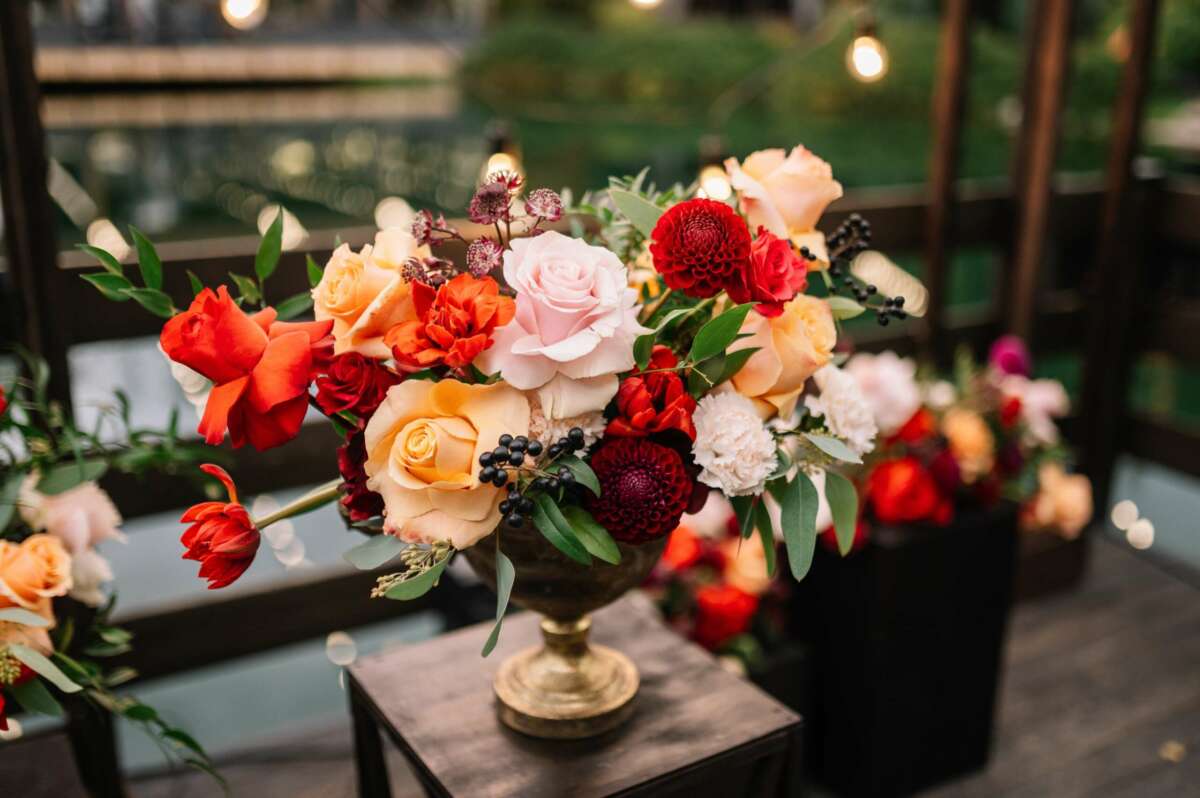Do words like exclusive, private, dues, waiting list and members-only excite you? If so, you’re not alone. Do they make you anxious or even angry? Ditto. This is a tension I frequently hear about from friends, acquaintances and family. And it’s also an interesting driver of a poorly understood, yet enduring luxury business: the private club. Why, despite economic downturns and cultural changes, do elite private clubs still exist? What’s the source of their appeal? Here’s our take on why private clubs have such enduring appeal for the elite.
Why are Private Clubs so Endlessly Appealing to the Elite?
With all due respect to Groucho Marx, lots of people do want to be members of the club. As one country club manager pointed out, “clubs are Facebook for real.”
Town and country, the private club world is thriving. Albeit with some modern advances. Luxury marketers, take note.
rumors of the demise of private clubs proved to be premature
Right after the global financial crisis and the concomitant recession in late 2008, a spate of articles appeared in print and online proclaiming the death of country clubs.
In light of the economic downturn, they were deemed to be too expensive. The facilities were run-down and no one wanted to pay to update them. Younger people didn’t want to play golf. The dress codes were arbitrary and restrictive. Basically, it all just felt really 20th-century.
One might have said some of the same things about private city clubs – that they had outlived their usefulness and were doomed to extinction.
And yet, in both cases, one would have been mistaken. In 2012, 52% of U.S. country clubs reported a loss in membership, with just 22% seeing a gain. But by 2014, those positions reversed, with 39% gaining new members and only 26% losing them.
The Country Club Managers Association estimates that there are 2 million members at the 2,600 clubs they manage in the U.S. New members-only city clubs are launching and expanding all the time.
Some of the country club membership gains are because the clubs cut their fees. They also added business and fitness centers, relaxed their dress codes and became more family friendly. One country club even converted one of its golf courses to farmland so that the members could grow their own kale. True story.
even a recession can’t cancel a club
In the end, the underlying reason for the continued prominence of the private club seems to be driven by one of the eternal laws of human nature: never underestimate the desire of rich people to be among likeminded peers. In this, by the way, they are just like the average person – 75% of American adults are active in at least one voluntary group. The difference is that there’s a corollary to this desire to belong for the well-to-do: they highly value the psychic benefit of being “in,” while keeping other people out.
So if you were one of the ones hoping that the recession would kill these elite and exclusionary private clubs off for good, sorry. It’s not happening.
what’s the point of being a member of the club?
Full disclosure: I belong to one private club (it’s my alma mater’s, in the city) and despite being cognizant of the significant negatives surrounding membership only clubs – the lack of diversity in many clubs, the societal toll of exclusion and the creation of an echo-chamber where people hear only the opinions they want to hear (and don’t forget, many of Bernie Madoff’s victims were people who belonged to his country club) – I also understand their allure.
Membership has its privileges: when you enter your club, you feel safe from prying eyes; you feel validated, because you’ve been accepted as a member; you run into people you like but don’t see regularly; the people who work there have been there a long time, and they’re like friends; the weird customs and mores of the club seem charming and eccentric, rather than irritating and annoying. It’s convenient: you can always get a table, a court, or a tee-time.
When you have nowhere else to go, you can always go to your club. It’s that elusive Third Place, between home and work.
modern clubs have deviated from old school norms
In the old days, there were private membership clubs for the elite: country clubs like the Maidstone; city clubs like the China Club, the California Club, the Union Club, and Boodles; and alumni clubs like the Harvard Club. The physical plants that these organizations occupied were remarkably similar no matter the country: dark wood, leather chairs, working fireplaces, and the obligatory athletic courts.
The dress code was jacket-and-tie required at all times. Some of these places allowed women. Fewer allowed people of color. The design aesthetic was decidedly older white male.
Fast forward to today, and we have . . . new country clubs like the SoHo House in New York, LA and Somerset in southwest England; new city clubs like The Kee Clubs in Hong Kong and Shanghai, The Capital Club in Dubai, and Wingtip and The Battery in San Francisco; and new alumni “clubs” like Stanford X, the alumni-only tech accelerator.
the new club aesthetic and other innovations
There’s still a decidedly difficult application process for all of these institutions.
But women and people of color are now welcome (at least in theory). The dress code is usually more lenient. And the new design aesthetic? Industrial chic. Other interesting new trends in the club world? Here are a few:
Food that actually tastes good.
Mosimann’s Club in London, in a former Presbyterian church in Belgravia, is a members-only private dining club run by chef Anton Mosimann OBE, who did all of the catering for the royal wedding of William and Kate. No more club sandwiches!
Shopping opportunities within arm’s reach.
The Club at Wingtip in San Francisco is nestled above a men’s apparel retailer, and if you are a member, your dues convert to store credit – and most of what you see on display at the club, from obscure scotch to beautiful furniture, can be purchased. Most men hate to shop, so maybe this makes the experience less painful?
Club credit cards.
Magnises, a social club in the West Village targeting members aged 25-35, provides a credit card that links to an existing bank account that gets you into the clubhouse and also guarantees last-minute dinner reservations at neighborhood hot spots, nightclub access with no waiting, and room upgrades at selected boutique hotels. Finally, getting carded is a good thing.
Work and play.
Private clubs have always had both a social purpose and a business purpose, but now those dual aims are much more openly facilitated. At Neue House in New York, which is part coworking space and part private social club, you can run your business from the club by day, and in the evening you can indulge in members only lectures and performances.
But you have to fit in — a friend of mine was politely told that he was being kicked out of the club after his first year of membership, as he wasn’t quite what they wanted in terms of their community (he talked too loudly on the phone, apparently). Even in a co-working space, you can get voted off the island.
Private mountains and racetracks instead of private golf courses.
As the next generation of the wealthy join private country clubs, their sport of choice may not be golf. The Bohemian Grove in Sonoma has always offered outdoor fun, and now there are even more options.
New ski clubs in the Rockies (The Yellowstone Club) and Vermont (The Hermitage Club) provide members-only access to their mountains and lots of ancillary services. The Thermal Club in La Quinta is for supercar owners, and has its own private racetrack – members are required to build garages surrounding the track to the tune of $1 million each.
some elements of club life are immutable, though
Despite these new twists, not surprisingly, some things in the club world remain the same:
Secret passwords.
Like the speak-easies of the Prohibition era, some clubs still like the mystery of requiring secret codes for admission. Marianne’s, in the Hotel Zetta in San Francisco, is apparently a super-secret club for the tech elite. Named for rocker Marianne Faithfull, admission to the club requires you to use a secret key code.
Low admission rates.
Magnises reports accepting only 30% of its applicants; White’s in London still has only 500 members; you can’t even get a tour of Neue House without knowing someone, so you can assume your admission chances probably rival those you’d face applying to Stanford.
Single-sex membership.
Even now, there are clubs like the Knickerbocker in New York that still do not admit women. And yes, there are still women-only clubs that do not admit men, like the Colony Club and Belizean Grove (Verity in downtown Toronto is a recent addition to that list). Good trend or bad? You decide.
Formal dress codes.
Some clubs that cater to the young still won’t relax their dress codes. At Annabel’s in London, you’ll be “kicked off the dance floor” if you take your jacket off. We were really hoping to see Prince Harry loosen his tie, darn it!
Special-interest focus.
There is a plethora of private institutions with club houses, old and new, for people who have a narrower range of interests in common.
The Grolier Club in New York, founded in 1884, is dedicated to books and works on paper; the Athanaeum in London was established for people in science, literature and the arts and their patrons (Darwin was a member).
The Classic Car Club of Manhattan has a club house in SoHo, but the primary reason to join is access to its stable of 40 wildly expensive cars that members can drive for a day and return. Norwood in Manhattan and Silencio in Paris are for the creative class only.
The Grand Havana Room is for cigar aficionados. And HerbaBuena is a relatively new members-only marijuana social club in northern California offering “artisan-crafted, farm-to-table” medicinal ganga for sample and purchase. Sort of like a cigar lounge, but for modern times.
the new private club is pretty much like the old private club
Perhaps it is a disappointment that in many regards, the new luxury looks quite a lot like the old luxury: exclusionary entry policies that create anxiety and self-doubt, restrictive conduct rules once you’re in, and the eternal shame of being ejected from the club if you don’t fit in and are asked to leave.
As a black woman, I guess I should be happy that I can now be subjected to all of these painful experiences, just like majority-culture men.
In the end, the best tidbit I picked up from exploring the new world of private clubs is that at Mosimann’s in London, there’s a very special dining room that only seats two. I think that’s an idea whose time has come. Sometimes the best clubs have only two members.
join our community
For access to insider ideas and information on the world of luxury, sign up for our Dandelion Chandelier Newsletter here. And see luxury in a new light.

Pamela Thomas-Graham is the Founder & CEO of Dandelion Chandelier. A Detroit native, she has 3 Harvard degrees and has written 3 mystery novels published by Simon & Schuster. After serving as a senior corporate executive, CEO of CNBC and partner at McKinsey, she now serves on the boards of several tech companies. She loves fashion, Paris, New York, books, contemporary art, running, skiing, coffee, Corgis and violets.








